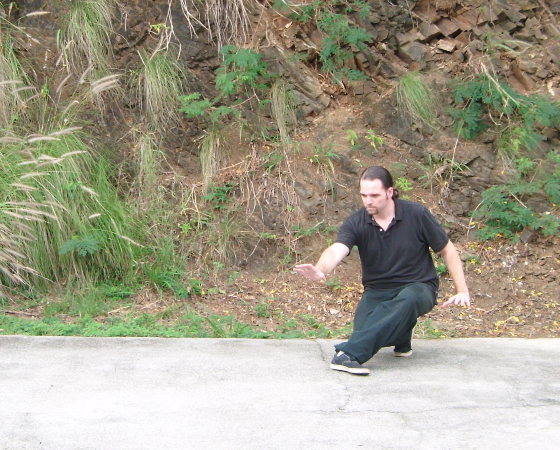
Franklin Fick - Xing Yi - Dragon
Xing Yi Quan is an internal styles of Chinese martial arts. Internal styles of Chinese martial arts are known for their emphasis on Qi development as well as martial capabilities. In modern times many people practice Internal styles for health and fitness. Xing translates as form or shape and Yi translates as intention or mind. Quan means fist or boxing. So literally the name Xing Yi Quan means form and intention boxing.
There are several different theories on the origin of Xing Yi Quan. One such legend says that the style was founded by the Chinese General Yue Fei who lived between 1103 and 1142. General Yue Fei is renowned for his loyalty and is also credited with developing the Eagle Claw style as well as several Qigong sets. Many people claim that the story of Yue Fei founding the style of Xing Yi is just legend. There is a lack of evidence and it is a fairly common practice to attribute the founding of a style to a prolific figure in history.
Another theory on the origins of Xing Yi Quan states that it is based on the use of the spear. This theory tends to hold more weight with modern day practitioners as the movements of Xing Yi and the fighting tactics bear a resemblance to the way a spear is used. The movements of Xing Yi are straight forward and attacks use the entire body in coordination similar to the way a thrust is preformed with the spear. The fighting tactics are also similar to the spear arts in that the opponent's attacks are slightly redirected and then a counterattack is initiated instantly usually following the shortest distance to the target.
The movements of the forms are not flowery and ornate. A typical Xing Yi form usually consists of a single movement or a short set of movements that are drilled over and over. When the practitioner has run out of training space he preforms a turning motion and then continues to drill the movements back along the path he had just come. This practice can go on indefinitely until the practitioner wishes to end the practice. This type of training is effective for gaining skill but it can also support the legend of the military origin of Xing Yi. Large groups of people in the military are usually effectively drilled in a similar fashion.
Although the training in Xing Yi consists of drilling single movements or short sequences of movements over and over again, it would be a mistake to assume that the style is simple or easy. While a movement itself could be learned in a matter of minutes it take a great deal of time and effort to perfect and be able to use. The movements themselves train a complex usage of the body that allows the practitioner to deliver a great deal of power without much visible movement. Each form or movement conditions the body and builds upon the movements that have been previously learned. That is why it is important to spend time practicing each form before moving to the next one.






